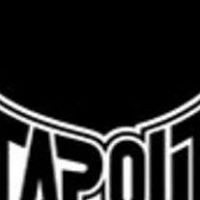David F Seitz
age ~67
from Waukesha, WI
- Also known as:
-
- Dave F Seitz
- Phone and address:
-
21820 Doneswood Dr, Waukesha, WI 53186
2627989665
David Seitz Phones & Addresses
- 21820 Doneswood Dr, Waukesha, WI 53186 • 2627989665
- Vernon, WI
- Hammond, IN
- 1180 Links Ct #4, Brookfield, WI 53005 • 2627989665
- Bloomington, MN
- Greer, SC
- Fishers, IN
Work
-
Position:Professional/Technical
Education
-
Degree:Graduate or professional degree
Ranks
-
Licence:Virginia - Authorized to practice law
-
Date:1976
Emails
Lawyers & Attorneys

David Wayne Seitz - Lawyer
view sourceLicenses:
Virginia - Authorized to practice law 1976
Name / Title
Company / Classification
Phones & Addresses
Owner
B&D Golf Carts
Ret Recreational Vehicles
Ret Recreational Vehicles
34433 Walburg Ln, Lyons, WI 53105
Director
Aro Inc
Collection Agencies
Collection Agencies
8772507070, 2507624111
Real property
A.R.C. ACCOUNTS RECOVERY (U.S.A) CORPORATION LLC
DDK FINANCIAL ASSOCIATES, LLC
SEITZ FAMILY INVESTMENTS, LLC
A.R.C. Accounts Recovery (U.S.A.) LLC
1660 S Hwy 100 #500A, Minneapolis, MN
1220 N Market St #606, Wilmington, DE
1220 N Market St #606, Wilmington, DE
Resumes

David Seitz
view source
David Seitz
view source
David Seitz
view source
David Seitz
view source
David Seitz
view source
David Seitz
view source
David Seitz
view source
David Seitz
view sourceVehicle Records
-
David Seitz
view source -
Address:15290 18 Ave N APT 710, Minneapolis, MN 55447
-
VIN:2HGFG12877H519309
-
Make:HONDA
-
Model:CIVIC CPE 2DR AT EX
-
Year:2007
Us Patents
-
Patterned Surface Friction Materials, Clutch Plate Members And Methods Of Making And Using Same
view source -
US Patent:6524681, Feb 25, 2003
-
Filed:Oct 2, 1998
-
Appl. No.:09/155687
-
Inventors:David S. Seitz - Woodbury MN
Elizabeth C. Edblom - Minneapolis MN
Karl T. McKeague - Cottage Grove MN -
Assignee:3M Innovative Properties Company - St. Paul MN
-
International Classification:D06N 704
-
US Classification:428143, 428147, 428172, 192107 M, 188251 R, 188257, 180337, 105 14, 104 2, 104 18, 74340
-
Abstract:A friction material for a friction facing member useful for transmitting torque includes a backing having a front surface and a rear surface. A plurality of precisely shaped friction composites defining patterned friction coating are attached to the front surface of the backing. The precisely shaped friction composites include a plurality of friction particles dispersed in a binder. In one embodiment, the friction material has an elastic modulus of about 10 dynes/cm or less.
-
Structured Paper Release Liner, Adhesive-Backed Article Assembly And Method Of Making Same
view source -
US Patent:7972670, Jul 5, 2011
-
Filed:Nov 19, 2004
-
Appl. No.:10/595835
-
Inventors:David S. Seitz - Woodbury MN, US
Kanta Kumar - Maplewood MN, US
Larry A. Meixner - Woodbury MN, US
Mieczyslaw H. Mazurek - Roseville MN, US
Stefan O. Dietrich - Ratingen, DE -
Assignee:3M Innovative Properties Company - St. Paul MN
-
International Classification:B32B 33/00
B32B 5/02
B32B 3/00 -
US Classification:428 401, 428 418, 428 98, 428141, 428142, 428152, 428153, 428156, 428161, 428165, 428174
-
Abstract:A structured paper release liner () for use with an article () backed with a pressure sensitive adhesive, an adhesive-backed article assembly () and methods of making each are disclosed. The liner () comprises a piece of paper () having a release side free of a structural support layer, a back side, and a structured release surface () having a pattern formed into the paper () on the release side. A release material is on the structured release surface of the paper. The pattern formed in the paper () is designed so as to form fluid egress channels in a bonding surface of the pressure sensitive adhesive (). The fluid egress channels define a structured bonding surface () having exit pathways for fluid to bleed out from behind the article when the structured bonding surface () is adhered to or otherwise disposed on a substrate.
-
Mounting Mat With Lower Friction Surface For Assembling And Higher Friction Surface For Mounting
view source -
US Patent:20130269314, Oct 17, 2013
-
Filed:Dec 20, 2011
-
Appl. No.:13/996287
-
Inventors:Gary F. Howorth - Oakdale MN, US
Dale L. May - Knapp WI, US
Andrew B. Supina - Lake Elmo MN, US
David S. Seitz - Woodbury MN, US -
Assignee:3M INNOVATIVE PROPERTIES COMPANY - St. Paul MN
-
International Classification:F01N 3/021
F01N 3/24 -
US Classification:60272, 427402, 428141, 428143
-
Abstract:A mounting mat () comprising at least one inorganic layer () comprising inorganic materials suitable for mounting a pollution control element in a pollution control device. A friction—inducing material () is disposed on at least one side of the inorganic layer (). The deposited friction—inducing material () defines a higher friction area exhibiting a static coefficient of friction higher than that of the inorganic materials. A lower friction layer () is disposed so as to cover at least a portion of the higher friction area and define an exposed surface area of the mounting mat (). The exposed surface area exhibits a lower static coefficient of friction than that of the higher friction area. The lower friction layer () no longer covers a substantial portion of the higher friction area, after the mounting mat () mounts a pollution control element () in a pollution control device ().
-
Polymeric Ionomer Separation Membranes And Methods Of Use
view source -
US Patent:20200368690, Nov 26, 2020
-
Filed:Aug 14, 2018
-
Appl. No.:16/638171
-
Inventors:- St. Paul MN, US
David Scott Seitz - Woodbury MN, US
Eric F. Funkenbusch - Hudson WI, US
Ryan C. Shirk - Mendota Heights MN, US
Jinsheng Zhou - Woodbury MN, US
Eric J. Hanson - Hudson WI, US
Moses M. David - Wells TX, US
Kazuhiko Mizuno - Tokyo, JP -
International Classification:B01D 61/36
B01D 71/32
B01D 69/12
B01D 71/46
B01D 67/00
B01D 69/02 -
Abstract:A separation membrane for selectively separating (e.g., pervaporating) a first fluid (e.g., a first liquid) from a mixture comprising the first fluid (e.g., first liquid) and a second fluid (e.g., second liquid), wherein the separation membrane includes a polymeric ionomer that has a highly fluorinated backbone and recurring pendant groups according to the following formula (Formula I): —O—R—[—SO—N(Z)—SO—R—]—[SO]-Q wherein: Ris a perfluorinated organic linking group; R is an organic linking group; Z is H, a monovalent cation, or a multivalent cation; Q is H, F, —NH, —O-2 Y+, or —CF; Y is H, a monovalent cation, or a multivalent cation; x=1 to 4; m=0 to 6; and n=0 or 1; with the proviso that at least one of m or n must be non-zero.
-
Composite Membranes With Improved Performance And/Or Durability And Methods Of Use
view source -
US Patent:20200164319, May 28, 2020
-
Filed:Aug 14, 2018
-
Appl. No.:16/638167
-
Inventors:- St. Paul MN, US
Ryan C. Shirk - Mendota Heights MN, US
David Scott Seitz - Woodbury MN, US
Moses M. David - Wells TX, US -
International Classification:B01D 69/12
B01D 69/10
B01D 61/36 -
Abstract:A composite membrane for selectively separating (e.g., pervaporating) a first fluid (e.g., first liquid such as a high octane compound) from a mixture comprising the first fluid (e.g., first liquid such as a high octane compound) and a second fluid (e.g., second liquid such as gasoline). The composite membrane includes a porous substrate comprising opposite first and second major surfaces, and a plurality of pores. A pore-filling polymer is disposed in at least some of the pores so as to form a layer having a thickness within the porous substrate. The composite membrane further includes at least one of: (a) an ionic liquid mixed with the pore-filling polymer; or (b) an amorphous fluorochemical film disposed on the composite membrane.
-
Composite Membranes With Improved Performance And/Or Durability And Methods Of Use
view source -
US Patent:20200030748, Jan 30, 2020
-
Filed:Oct 7, 2019
-
Appl. No.:16/594502
-
Inventors:- St. Paul MN, US
Ryan C. Shirk - Mendota Heights MN, US
David Scott Seitz - Woodbury MN, US
Moses M. David - Woodbury MN, US -
International Classification:B01D 61/36
B01D 69/12
B01D 67/00
B01D 69/10
B01D 71/40
B01D 71/48
B01D 71/52
B01D 71/70 -
Abstract:A composite membrane for selectively separating (e.g., pervaporating) a first fluid (e.g., first liquid) from a mixture comprising the first fluid (e.g., first liquid) and a second fluid (e.g., second liquid). The composite membrane includes a porous substrate comprising opposite first and second major surfaces, and a plurality of pores. A pore-filling polymer is disposed in at least some of the pores so as to form a layer having a thickness within the porous substrate. The composite membrane further includes at least one of: (a) an ionic liquid mixed with the pore-filling polymer; or (b) an amorphous fluorochemical film disposed on the composite membrane.
-
Polymeric Ionomer Separation Membranes And Methods Of Use
view source -
US Patent:20180229186, Aug 16, 2018
-
Filed:Jul 1, 2016
-
Appl. No.:15/737955
-
Inventors:- Sain Paul MN, US
David S. Seitz - Woodbury MN, US
Eric F. Funkenbusch - Hudson WI, US
Ryan C. Shirk - Mendota Heights MN, US
Jinsheng Zhou - Woodbury MN, US
Eric J. Hanson - Hudson WI, US
Moses M. David - Woodbury MN, US
Kazuhiko Mizuno - Tokyo, JP -
International Classification:B01D 61/36
B01D 69/12
B01D 69/10
B01D 67/00
B01D 71/32
B01D 71/46
B01D 63/10 -
Abstract:A separation membrane for selectively separating (e.g., pervaporating) a first fluid (e.g., a first liquid) from a mixture comprising the first fluid (e.g., first liquid) and a second fluid (e.g., second liquid), wherein the separation membrane includes a polymeric ionomer that has a highly fluorinated backbone and recurring pendant groups according to the following formula (Formula I): —O—R—[—SO—N(Z′)—SO—R—]—[SO]-Q wherein: Ris a perfluorinated organic linking group; R is an organic linking group; Z is H, a monovalent cation, or a multivalent cation; Q is H, F, —NH, —NH, —OY, or —CF+1; Y is H, a monovalent cation, or a multivalent cation; x=1 to 4; m=0 to 6; and n=0 or 1; with the proviso that at least one of morn must be non-zero
-
Composite Membranes With Improved Performance And/Or Durability And Methods Of Use
view source -
US Patent:20180154311, Jun 7, 2018
-
Filed:Jul 1, 2016
-
Appl. No.:15/737945
-
Inventors:- St. Paul MN, US
Ryan C. Shirk - Mendota Heights MN, US
David Scott Seitz - Woodbury MN, US
Moses M. David - Woodbury MN, US -
International Classification:B01D 61/36
B01D 67/00
B01D 69/10
B01D 69/12
B01D 71/40
B01D 71/48
B01D 71/52
B01D 71/70 -
Abstract:A composite membrane for selectively separating (e.g., pervaporating) a first fluid (e.g., first liquid such as a high octane compound) from a mixture comprising the first fluid (e.g., first liquid such as a high octane compound) and a second fluid (e.g., second liquid such as gasoline). The composite membrane includes a porous substrate comprising opposite first and second major surfaces, and a plurality of pores. A pore-filling polymer is disposed in at least some of the pores so as to form a layer having a thickness within the porous substrate. The composite membrane further includes at least one of: (a) an ionic liquid mixed with the pore-filling polymer; or (b) an amorphous fluorochemical film disposed on the composite membrane.
Medicine Doctors

David J. Seitz
view sourceSpecialties:
Psychiatry
Work:
David J Seitz MD
12520 High Blf Dr STE 135, San Diego, CA 92130
8585231040 (phone), 8585231037 (fax)
12520 High Blf Dr STE 135, San Diego, CA 92130
8585231040 (phone), 8585231037 (fax)
Education:
Medical School
University of Southern California Keck School of Medicine
Graduated: 1984
University of Southern California Keck School of Medicine
Graduated: 1984
Procedures:
Psychiatric Diagnosis or Evaluation
Psychiatric Therapeutic Procedures
Psychiatric Therapeutic Procedures
Conditions:
Attention Deficit Disorder (ADD)
Bipolar Disorder
Depressive Disorders
Obsessive-Compulsive Disorder (OCD)
Anxiety Dissociative and Somatoform Disorders
Bipolar Disorder
Depressive Disorders
Obsessive-Compulsive Disorder (OCD)
Anxiety Dissociative and Somatoform Disorders
Languages:
English
Description:
Dr. Seitz graduated from the University of Southern California Keck School of Medicine in 1984. He works in San Diego, CA and specializes in Psychiatry.

David J. Seitz
view sourceSpecialties:
Dermatology
Work:
Lake Loveland Dermatology
776 W Eisenhower Blvd, Loveland, CO 80537
9706673116 (phone), 9706690159 (fax)
776 W Eisenhower Blvd, Loveland, CO 80537
9706673116 (phone), 9706690159 (fax)
Languages:
English
Spanish
Spanish
Description:
Mr. Seitz works in Loveland, CO and specializes in Dermatology. Mr. Seitz is affiliated with McKee Medical Center.

David James Seitz
view sourceSpecialties:
Psychiatry
Neurology
Neurology
Education:
University of Southern California(1984)

David J Seitz
view source
David Seitz
view source
David Seitz
view source
David Seitz
view source
David Seitz
view source
David Seitz Jr.
view source
David Seitz
view source
David Seitz
view sourceNews

3 Heart-Healthy Habits To Follow For A Longer Life, According To Doctors
view source- To discover some of the most impactful changes you can make in order to help your heart thrive, we spoke to David Seitz, MD, Medical Director of Ascendant Detox. He told us that eating a healthy diet, exercising, limiting your alcohol consumption, and managing stress are all essential.
- Date: Nov 14, 2022
- Category: Health
- Source: Google

NASA announces plans for 3-D printer capable of serving astronauts pizza
view source- foods similar to MREs (Meals Ready to Eat) when on mission. According to NASA spokesman David Seitz, who e-mailed the Washington Post on the subject, such pre-made food is typically too processed to carry much nutritional value and has even less flavor, something the printer would potentially eliminate.
- Date: May 22, 2013
- Category: Sci/Tech
- Source: Google
Plaxo

David Seitz
view source
david seitz
view sourcePast: Maint Tech at Bright Horizons Family Solutions
Classmates

David Seitz
view sourceSchools:
Adams Central High School Monroe IN 1969-1973
Community:
David Smith, Roger Geyer

David Seitz
view sourceSchools:
Florence High School Florence MS 1990-1991, Vancleave High School Vancleave MS 1991-1995
Community:
Mindy May, Carl Hayes

David Seitz
view sourceSchools:
Mt. Vernon High School Mt. Vernon IN 1981-1985
Community:
Cristi Sitzman, Anthony Greenwell

David Seitz
view sourceSchools:
Cambridge High School Cambridge MD 1954-1958
Community:
William Connolly, Miguel Gaurdia, Sally Frampton, Rosalinda Martin

David Seitz
view sourceSchools:
Mobeetie High School Mobeetie TX 1958-1962
Community:
Bobby Hill, Pamelia Vandever

David Seitz
view sourceSchools:
South Side Catholic High School Pittsburgh PA 1974-1978
Community:
Lisa Smith, Cynthia Haines, Renee Fanzo, Robert Terleski, Ken Holden, Yvonne Bugielski

David Seitz
view sourceSchools:
Wilcox Tech High School Meriden CT 1955-1959
Community:
Idella Michaud, Veronica Barnes

David Seitz
view sourceSchools:
Miller Comprehensive High School Regina Afghanistan 1982-1986
Community:
Randy Nicolle, Neil Pasqua, Jeannette Luttmer
Myspace
Youtube
Googleplus

David Seitz
Education:
University of Cincinnati College-Conservatory of Music - Theatre Design and Production
Bragging Rights:
Working the Superbowl!

David Seitz

David Seitz

David Seitz
Relationship:
In_a_relationship

David Seitz

David Seitz

David Seitz

David Seitz
Get Report for David F Seitz from Waukesha, WI, age ~67








